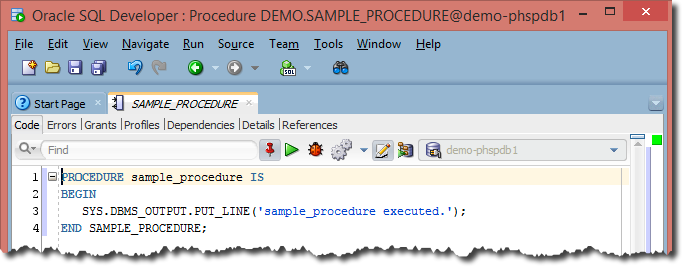Skip Headers
Jul 11, 2007 SoftDream Oracle UnWrapper is a unwrapping software for Oracle 7/8i/9i or Oracle 10g,Oracle 11 with unwrapping package,package body, stored procedures, triggers, views and user-defined functions.type.If you wrapped your own source code of package,stored procedures, triggers, views or user-defined functions with Oracle wrap tools,but you neglectful lost it,the application can help you recovery. Jul 25, 2018 Rewrap.exe Oracle Oracle API Platform Cloud Service: Design-First approach and using Oracle Apiary; Upgrade OEM 12.1.0.5 OMS to OEM13.2; Automate calls to SOAP and REST webservices using simple Python scripts; OpenSSL example commands; Oracle, Azure Cloud and licensing with hyperthreading enabled. 通过研究rewrap.exe的REWRAP.PRT文件,推测解密过程。 原始加密信息. This appendix describes how to use response files to perform silent or response file installations, configure network connections, and configure or start an Oracle database. It covers the following topics: C.1 How Response Files Work. Rewrap.exe Oracle. Oracle added (with PL/SQL Release. WrapNN.exe, where NN is the version number of the database. About Oracle Wrap Utility. Rewrap.exe Oracle Rating: 9,5/10 4092 votes Oracle Database Express Edition 11g Release 2 for Windows x64 - Unzip the download and run the DISK1/setup.exe: Oracle Database Express Edition 11g Release 2 for Windows x32.
| PL/SQL User's Guide and Reference Release 2 (9.2) Part Number A96624-01 |
|
This appendix shows you how to run the Wrap Utility, a standalone programming utility that encrypts PL/SQL source code. You can use the Wrap Utility to deliver PL/SQL applications without exposing your source code.
This appendix discusses the following topics:
Advantages of Wrapping PL/SQL Procedures
By hiding application internals, the Wrap Utility prevents
- Misuse of your application by other developers
- Exposure of your algorithms to business competitors
Wrapped code is as portable as source code. The PL/SQL compiler recognizes and loads wrapped compilation units automatically. Other advantages include
- Platform independence--you need not deliver multiple versions of the same compilation unit
- Dynamic loading--users need not shut down and re-link to add a new feature
- Dynamic binding--external references are resolved at load time
- Strict dependency checking--invalidated program units are recompiled automatically
- Normal importing and exporting--the Import/Export utility accepts wrapped files
Limitations of the Wrap Utility
String literals, number literals, and names of variables, tables, and columns remain in plain text within the wrapped file. Wrapping a procedure helps to hide the algorithm and prevent reverse-engineering, but it is not a way to hide passwords or table names that you want to be secret.
Some recent SQL syntax is not supported by the wrap utility by default. To enable the support for all SQL syntax, specify the option edebug=wrap_new_sql (with no dash). This option is not the default because it causes all SQL statements to appear in plain text in the wrapped file.
Running the Wrap Utility

To run the Wrap Utility, enter the wrap command at your operating system prompt using the following syntax:
Leave no space around the equal signs because spaces delimit individual arguments.
The wrap command requires only one argument, which is
where input_file is the name of the Wrap Utility input file. You need not specify the file extension because it defaults to sql. For example, the following commands are equivalent:
However, you can specify a different file extension as the following example shows:
Optionally, the wrap command takes a second argument, which is
where output_file is the name of the Wrap Utility output file. You need not specify the output file because its name defaults to that of the input file and its extension defaults to plb (PL/SQL binary). For example, the following commands are equivalent:


However, you can use the option oname to specify a different file name and extension, as the following example shows:
Input and Output Files for the Wrap Utility
Rewrap.exe Oracle Card
The input file can contain any combination of SQL statements. However, the Wrap Utility encrypts only the following CREATE statements, which define subprograms, packages, or object types:

All other SQL statements are passed intact to the output file. Comment lines are deleted unless they appear inside a subprogram, package, or object type.
When encrypted, a subprogram, package, or object type has the form
where header begins with the reserved word CREATE and ends with the name of the subprogram, package, or object type, and body is an intermediate form of object code. The word wrapped tells the PL/SQL compiler that the subprogram, package, or object type was encrypted by the Wrap Utility.
The header can contain comments. For example, the Wrap Utility converts
into
Generally, the output file is much larger than the input file.
Error Handling in the Wrap Utility
If your input file contains syntax errors, the Wrap Utility detects and reports them. However, the Wrap Utility cannot detect semantic errors because it does not resolve external references. For example, it does not report the following error (table or view does not exist):
The PL/SQL compiler resolves external references. So, semantic errors are reported when the Wrap Utility output file (.plb file) is compiled.
Version Compatibility
The Wrap Utility is upward-compatible with Oracle. So, for example, you can load files processed by the V8.1.5 Wrap Utility into a V8.1.6 Oracle database. However, the Wrap Utility is not downward-compatible with Oracle. So, for example, you cannot load files processed by the V8.1.6 Wrap Utility into a V8.1.5 Oracle database.
Guidelines
When wrapping a package or object type, wrap only the body, not the spec. That way, other developers see the information they need to use the package or type, but they do not see its implementation.
Rewrap.exe Oracle Code
Like all encrypted files, wrapped files cannot be edited. To revise a wrapped file, you must revise and re-wrap the underlying source code. So, do not wrap a subprogram, package, or object type until it is ready for shipment to end-users.
Copyright © 1996, 2002 Oracle Corporation. All Rights Reserved. |
|
| Home E-mail Us Oracle Articles New Oracle Articles
|
|